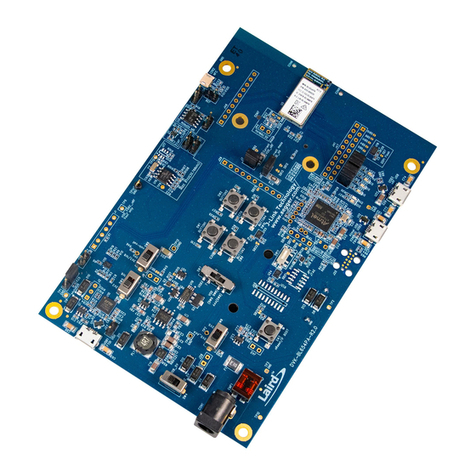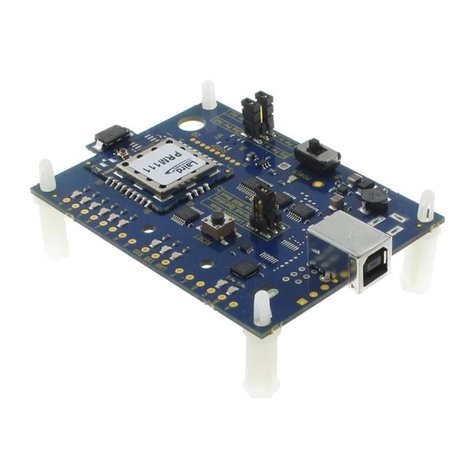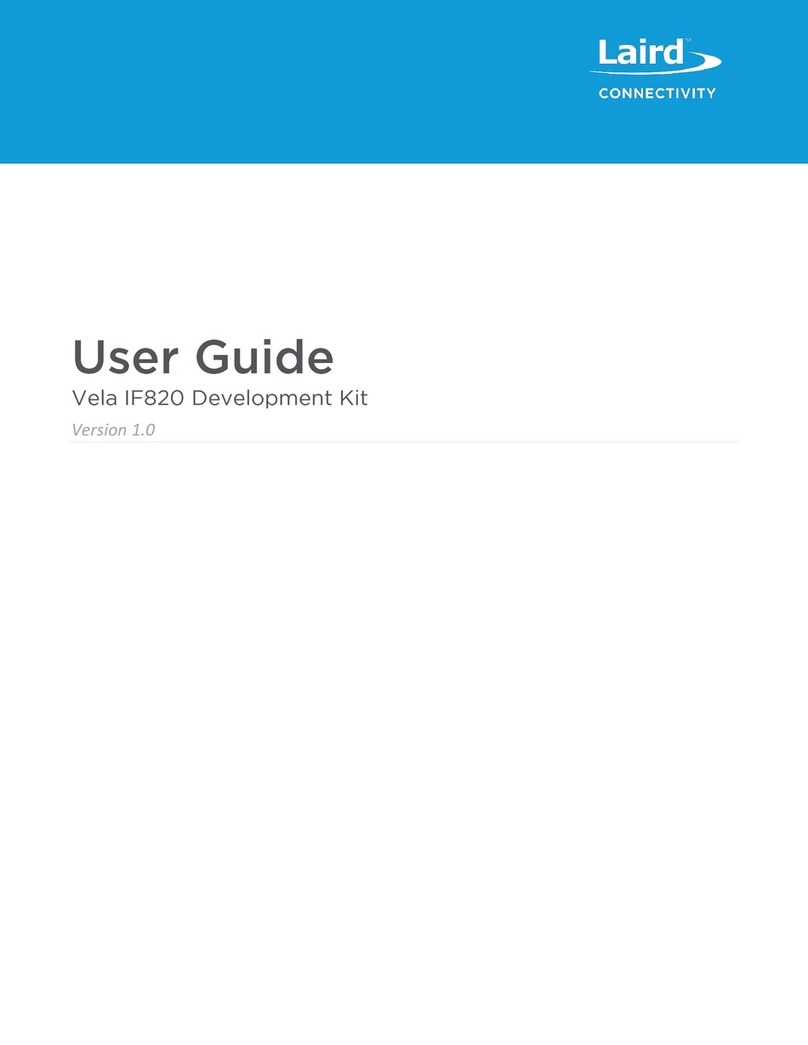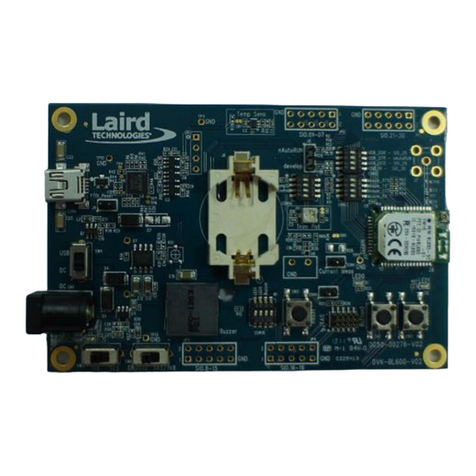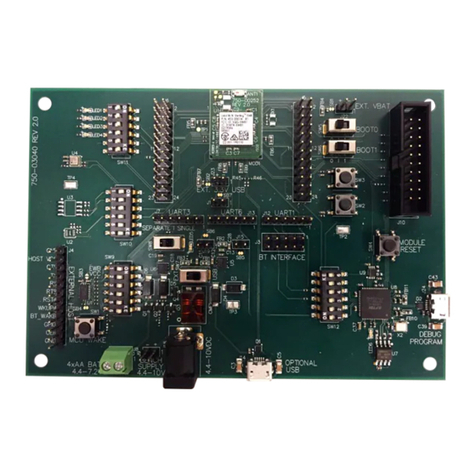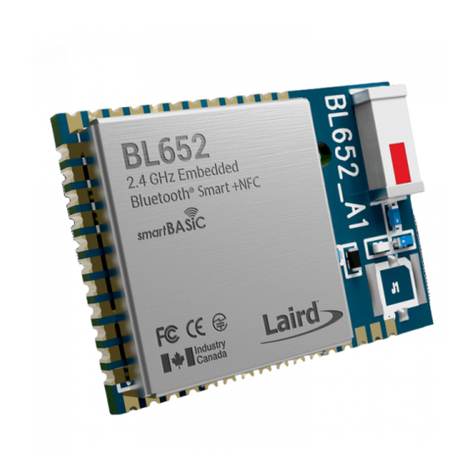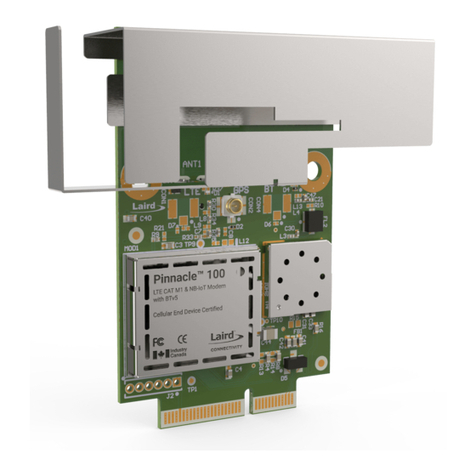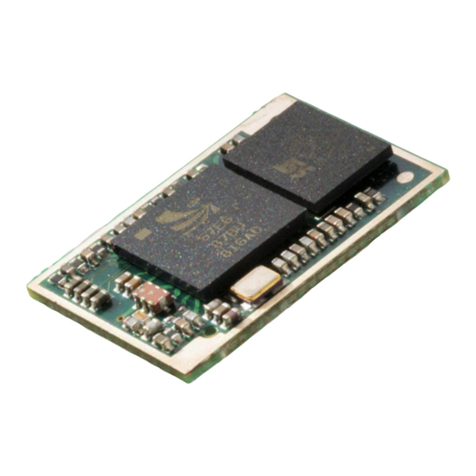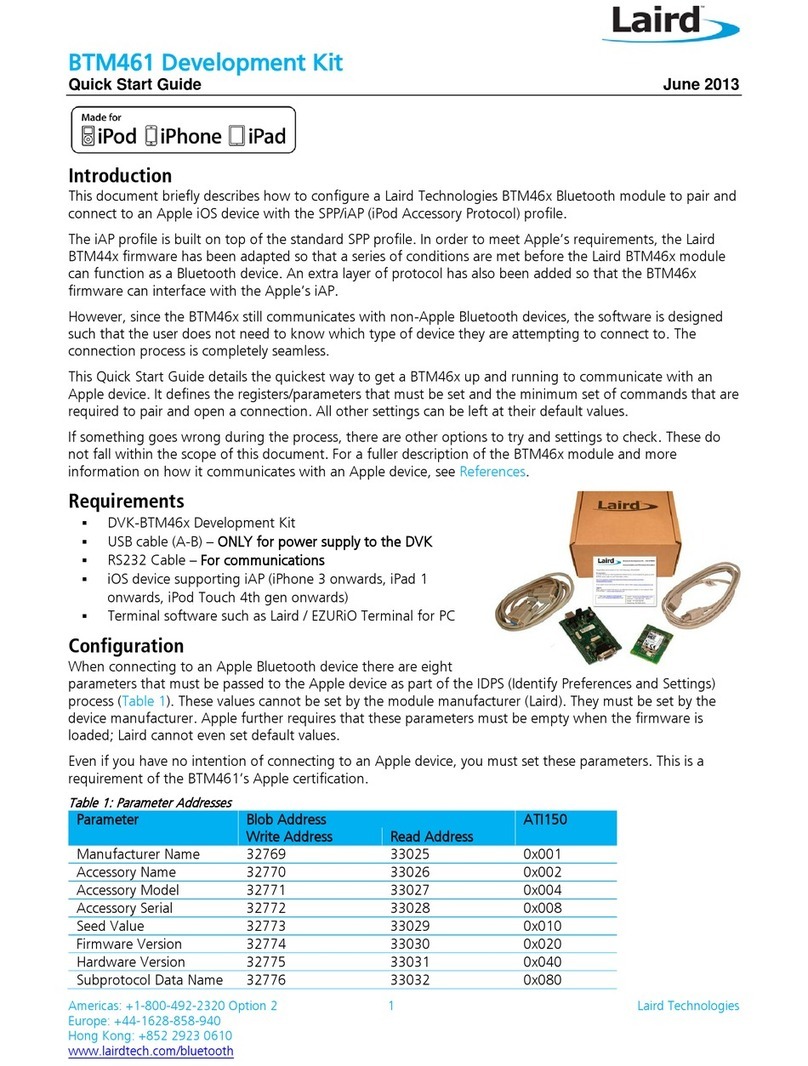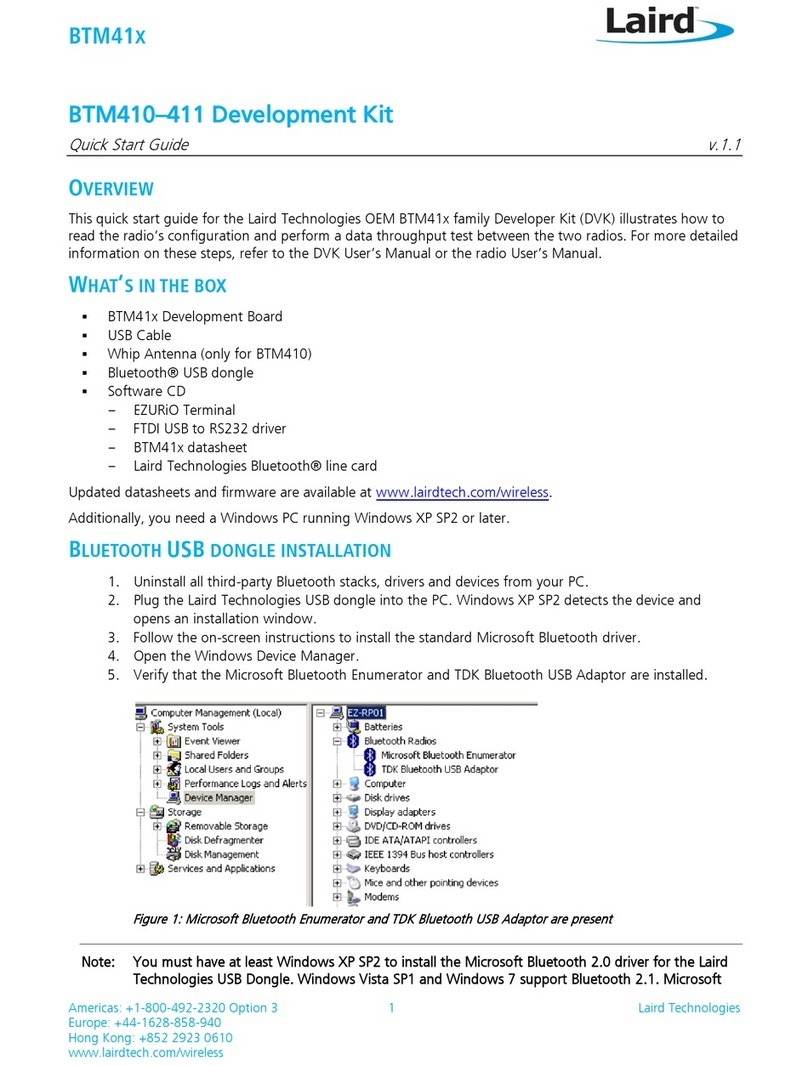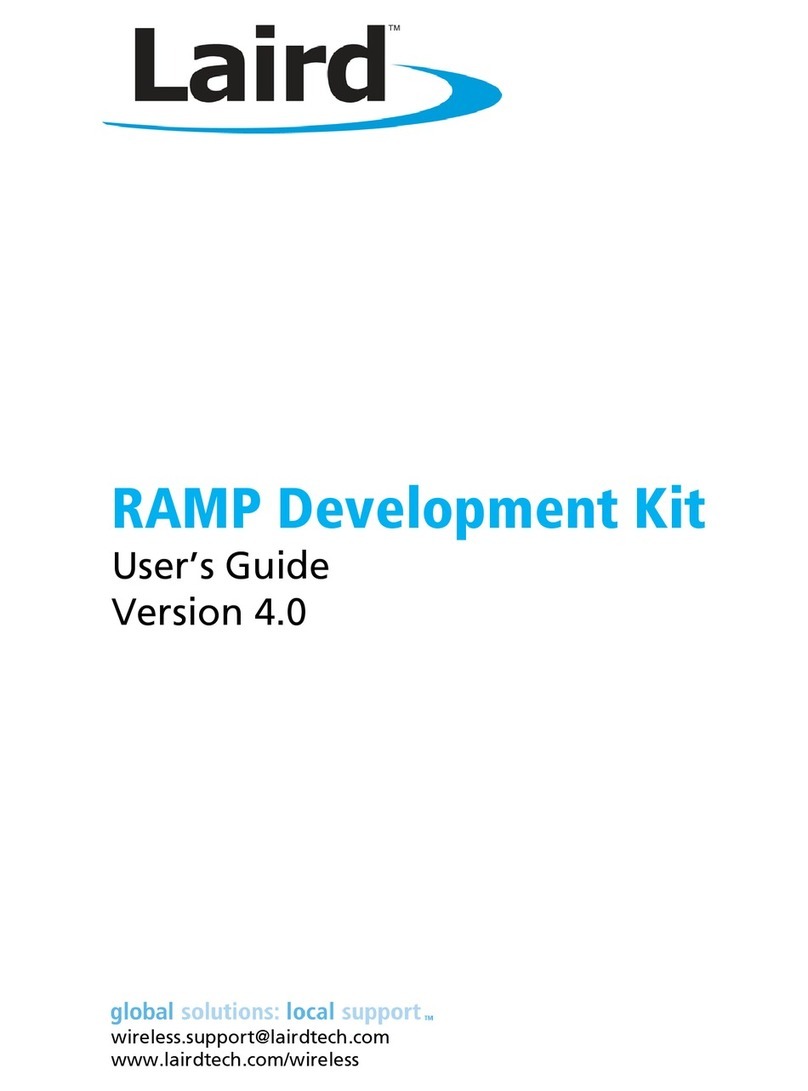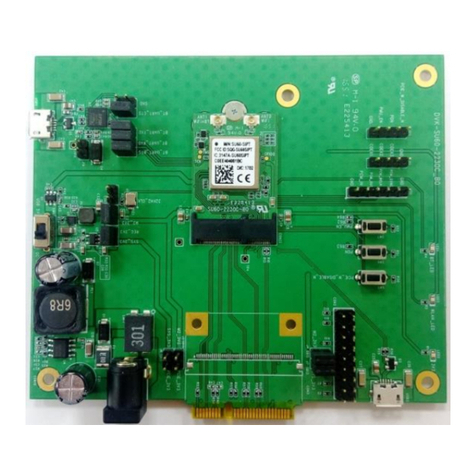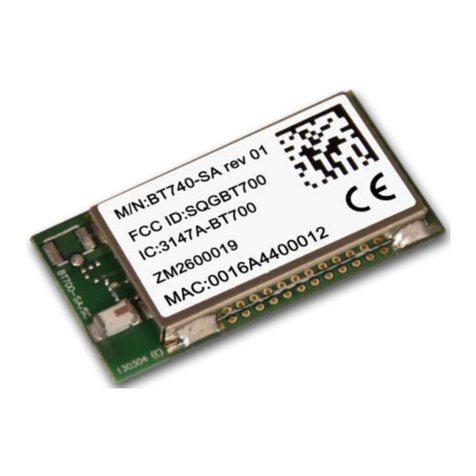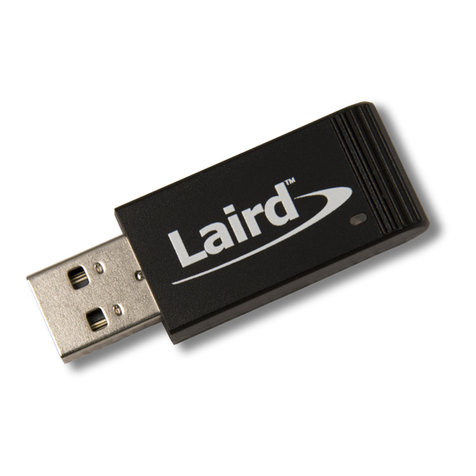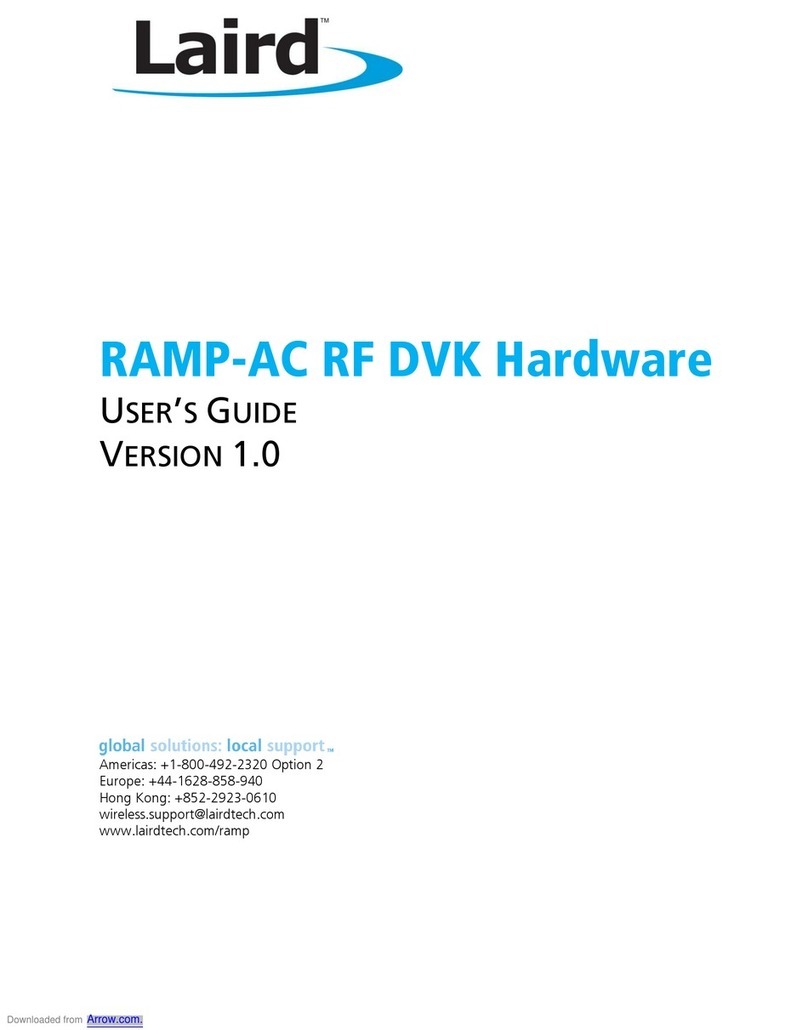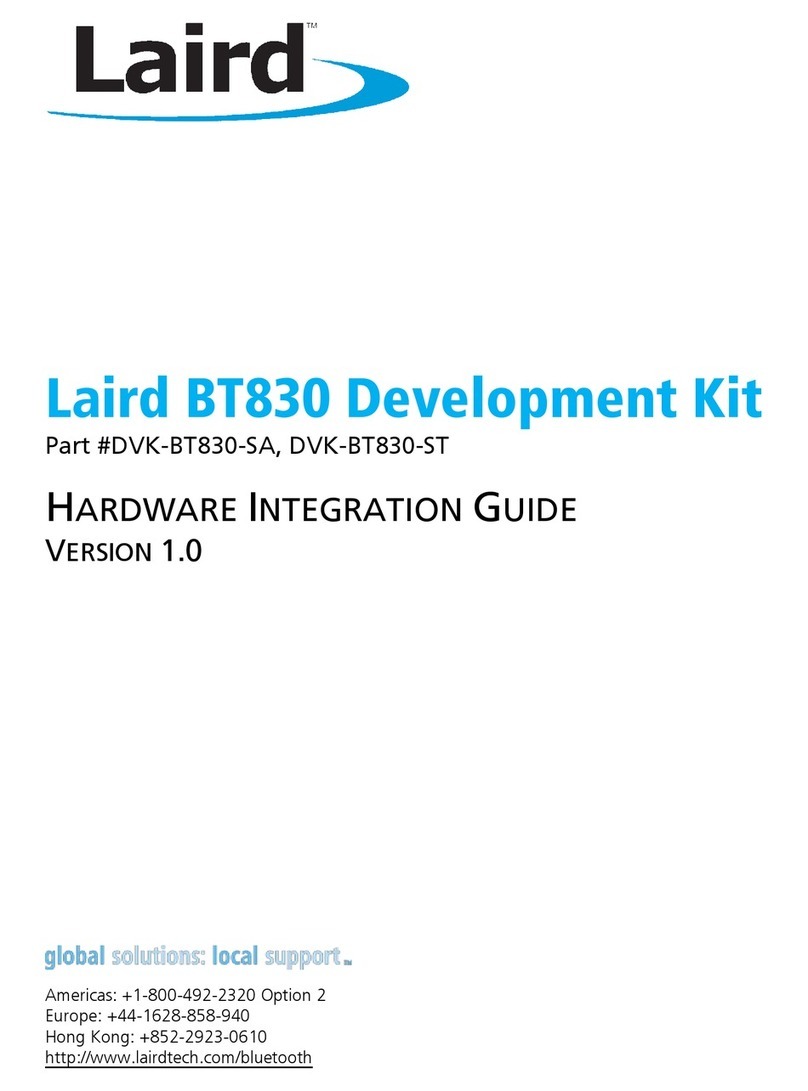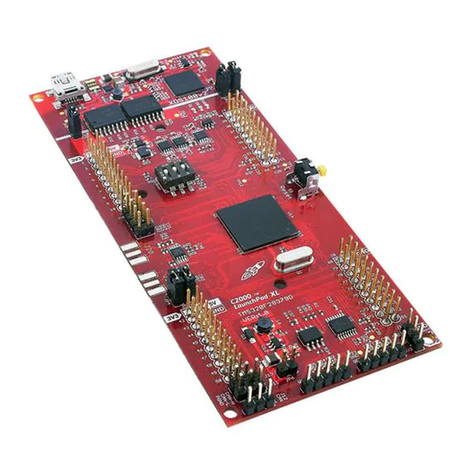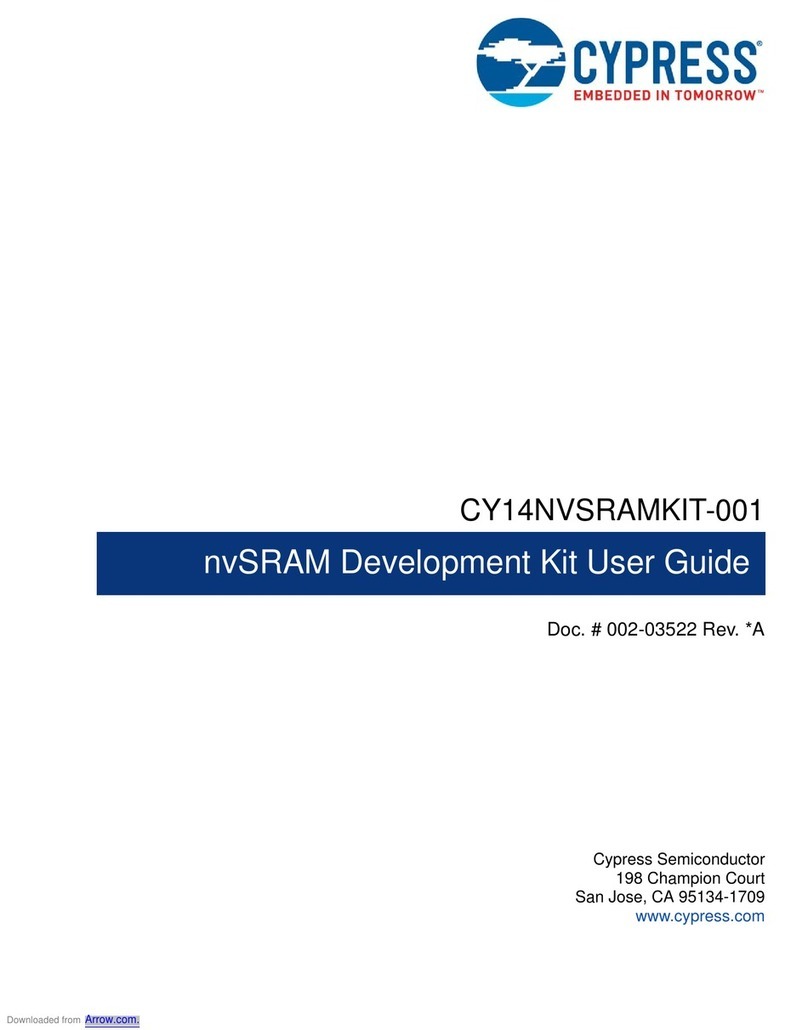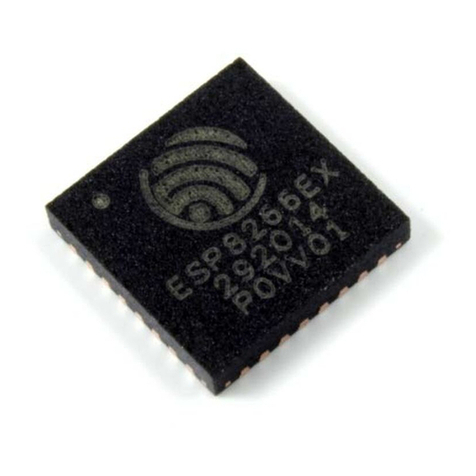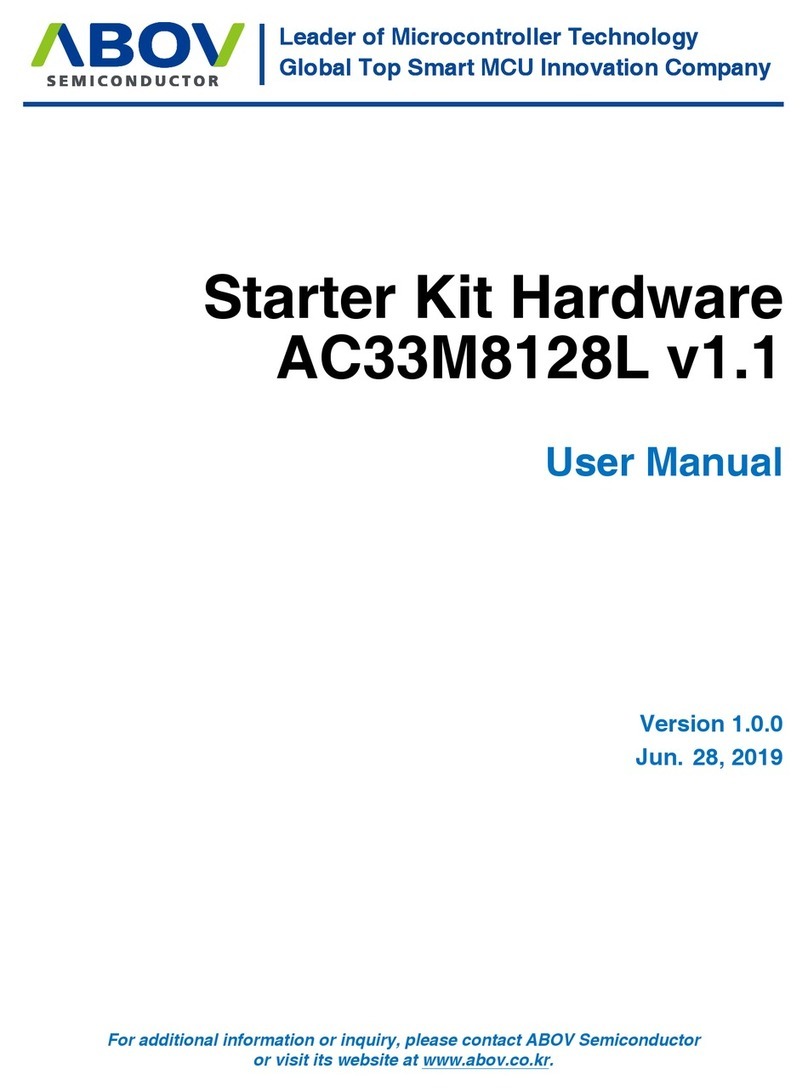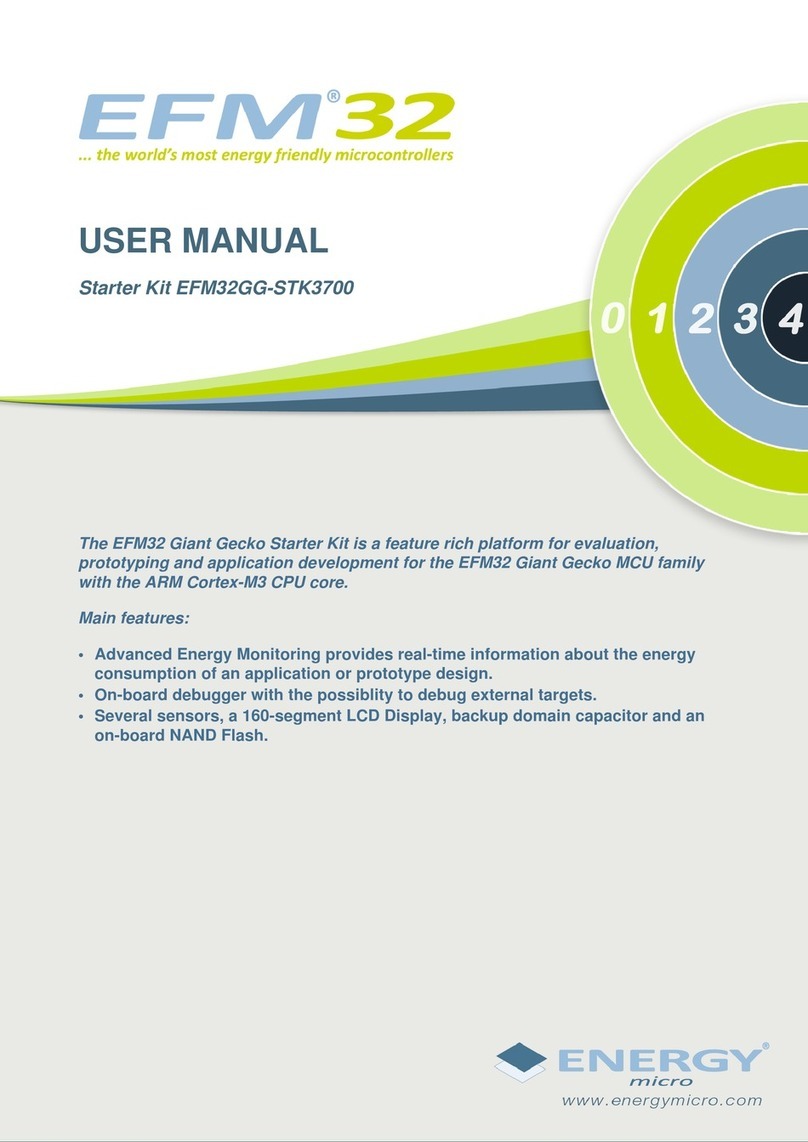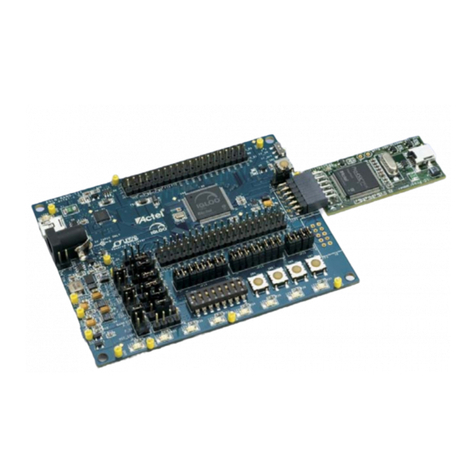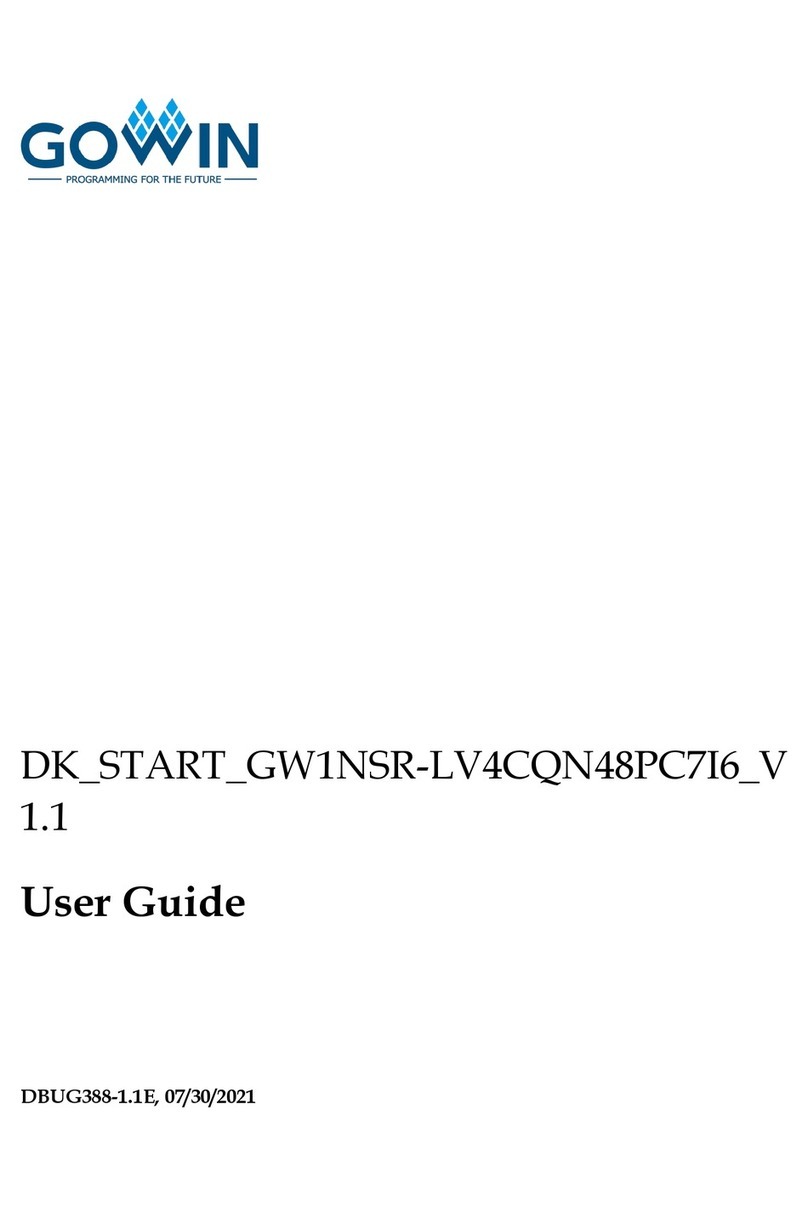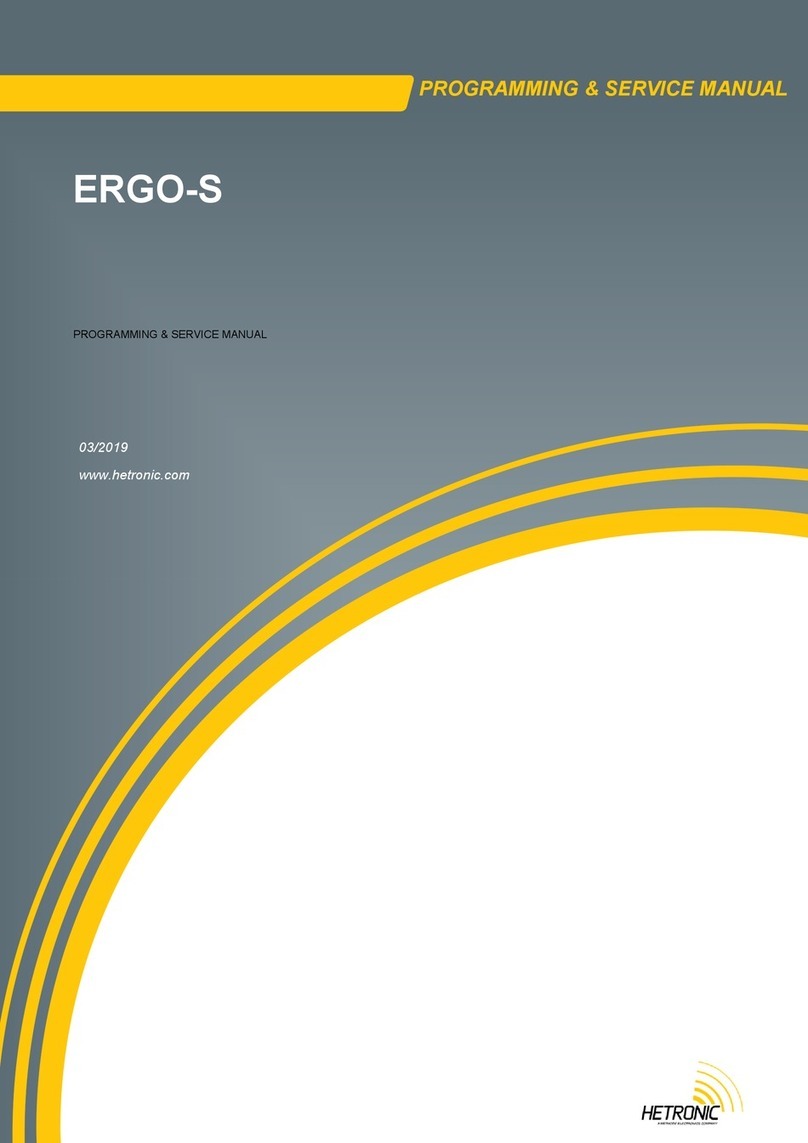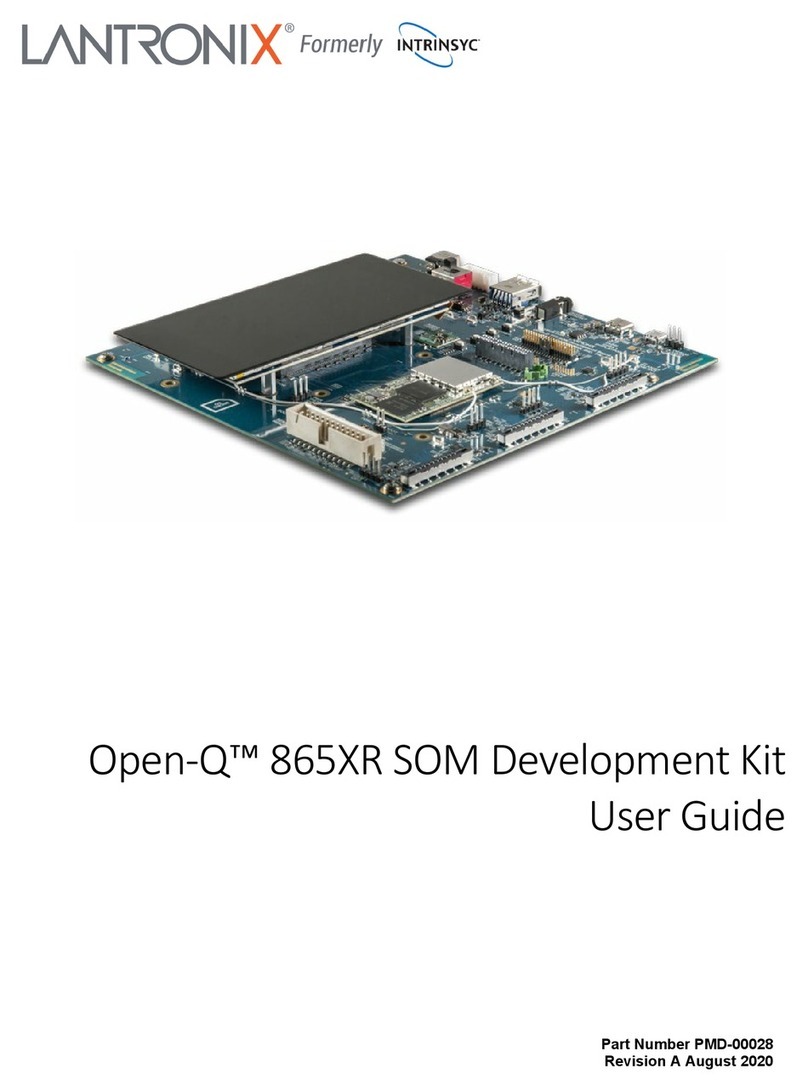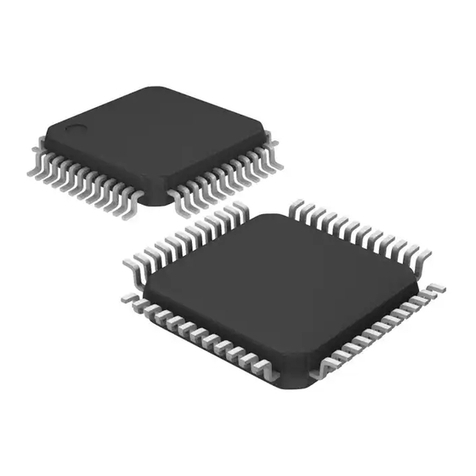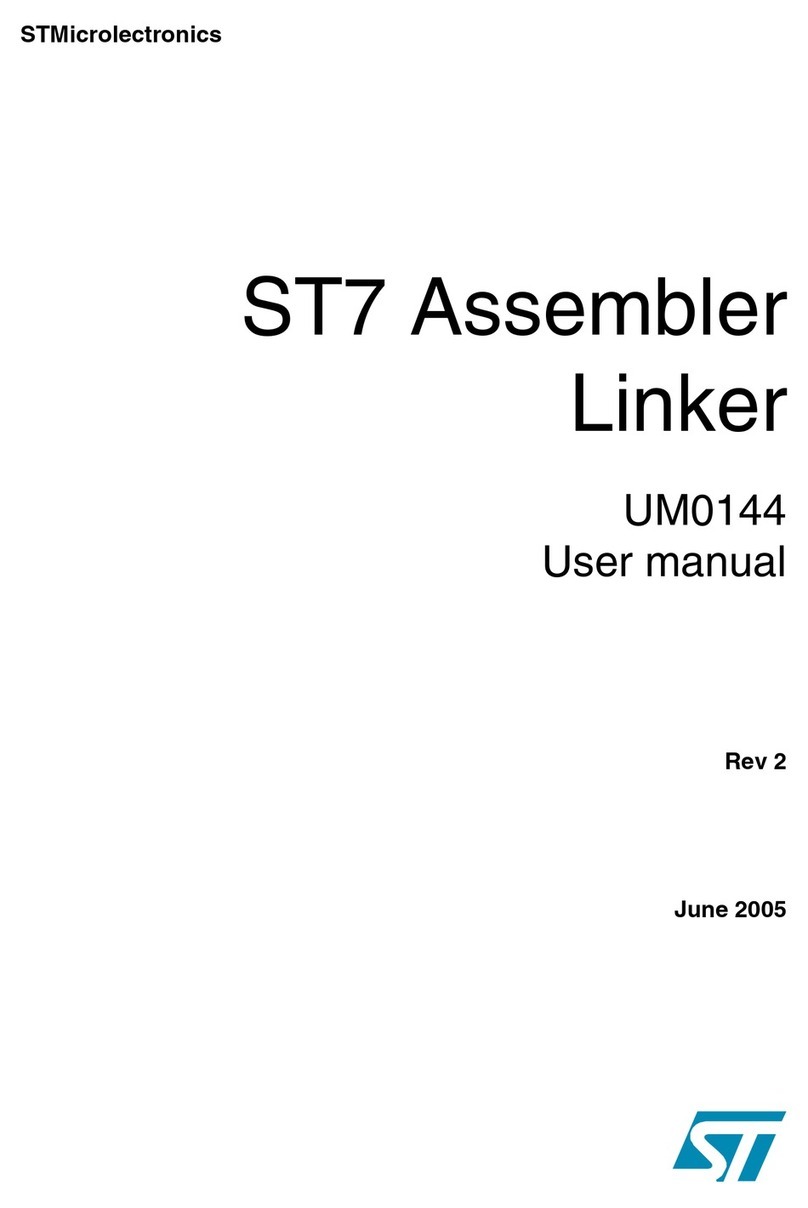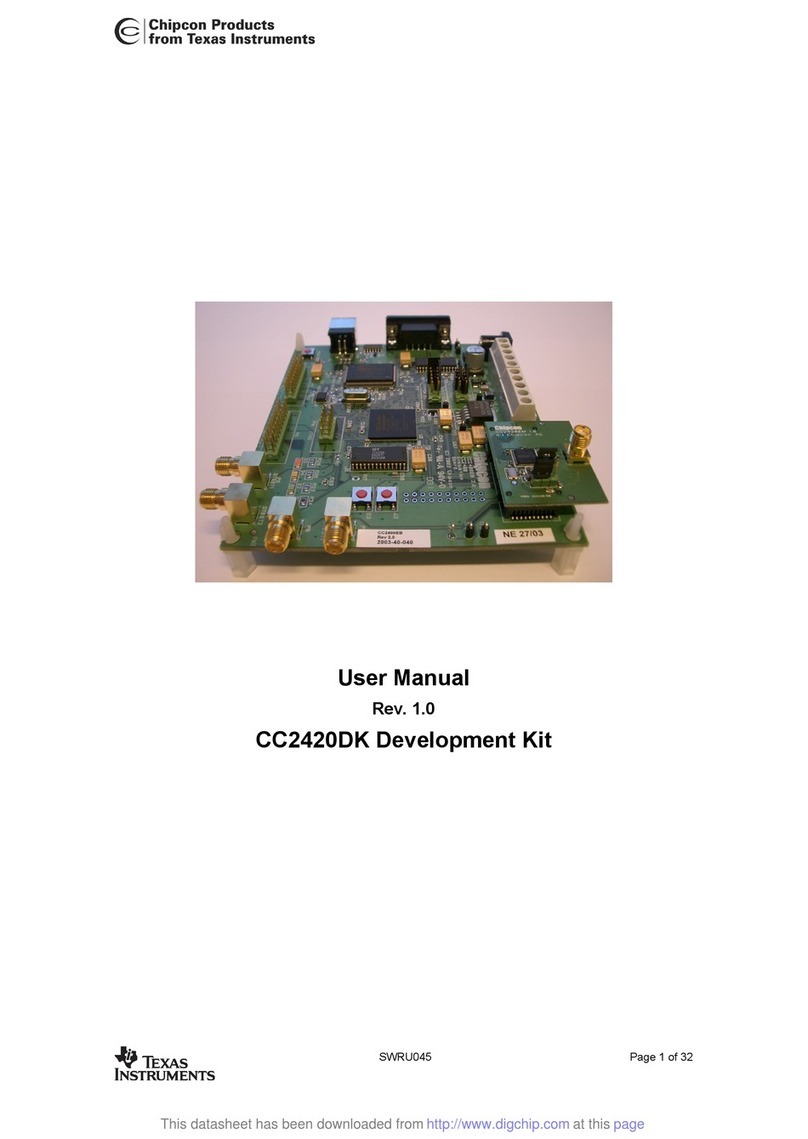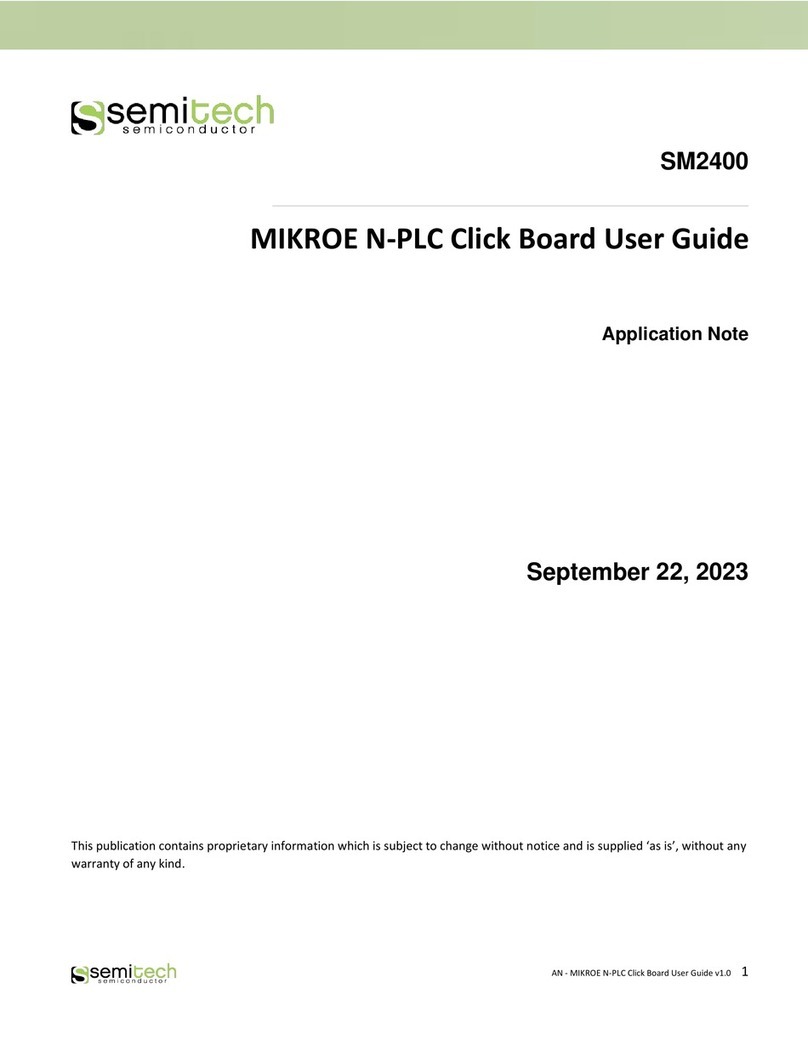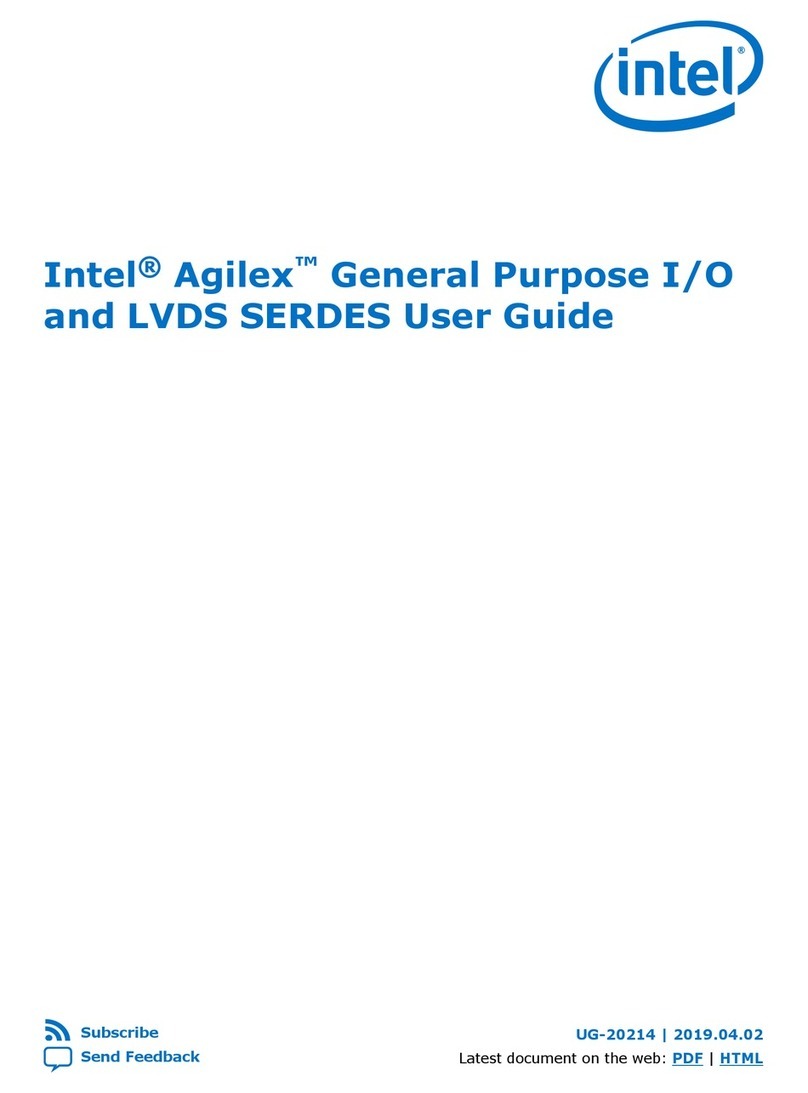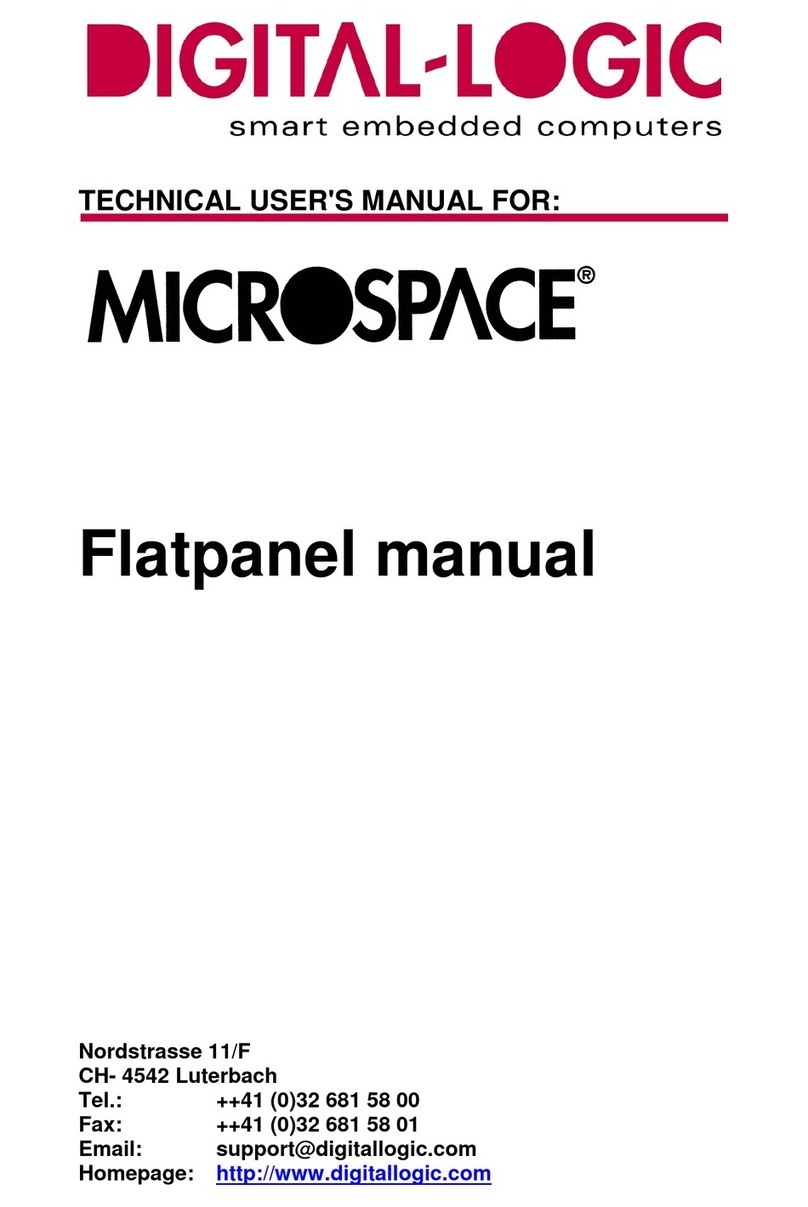
BT900 Development Kit
Version 0.3
Embedded Wireless Solutions Support Center:
http://ews-support.lairdtech.com
www.lairdtech.com/wireless
Laird Technologies
Americas: +1-800-492-2320
Europe: +44-1628-858-940
Hong Kong: +852-2268-6567 x026
CONTENTS
Contents ...............................................................................................................................................................3
1Laird DVK-BT900-Sx Development Kit ...........................................................................................................4
2Overview .........................................................................................................................................................4
2.1 Introduction ..............................................................................................................................................4
2.2 Package Contents......................................................................................................................................4
3DVK-BT900–Main Development Board.........................................................................................................5
3.1 Key Features..............................................................................................................................................5
3.2 Understanding the Development Board......................................................................................................6
4Functional Blocks ............................................................................................................................................8
4.1 Power Supply ............................................................................................................................................8
4.2 Reset Button..............................................................................................................................................9
4.3 4-Wire UART Serial Interface......................................................................................................................9
4.3.1 UART Mapping .............................................................................................................................9
4.3.2 UART Interface Driven by USB .......................................................................................................9
4.3.3 UART Interface Driven by External Source....................................................................................10
4.4 nAutoRUN Pin and Operating Modes.......................................................................................................11
4.5 OTA (Over the Air)
smart
BASIC application download .............................................................................12
4.6 VSP (Virtual Serial Port) connection to Host device....................................................................................12
5Software ........................................................................................................................................................13
6Breakout Connector Pinouts ........................................................................................................................14
6.1 JP2, JP3, JP4, JP5 SIO (Special Input / Output Sockets) Breakout Connectors...........................................14
6.1.1 JP2 ............................................................................................................................................. 14
6.1.2 JP3 ............................................................................................................................................. 15
6.1.3 JP4 ............................................................................................................................................. 16
6.1.4 JP5 BT-Wi-Fi Coexistence ............................................................................................................16
6.2 Additional Peripherals / Sensors ...............................................................................................................16
6.2.1 Buzzer ........................................................................................................................................17
6.2.2 Temperature Sensor....................................................................................................................18
6.2.3 Trim Potentiometer.....................................................................................................................19
6.2.4 Push Buttons and LEDs................................................................................................................20
6.2.5 I2C device...................................................................................................................................21
6.2.6 SPI device ...................................................................................................................................21
7Other Features ..............................................................................................................................................22
7.1 Current Consumption Measurement........................................................................................................22
8Additional Documentation ..........................................................................................................................24
